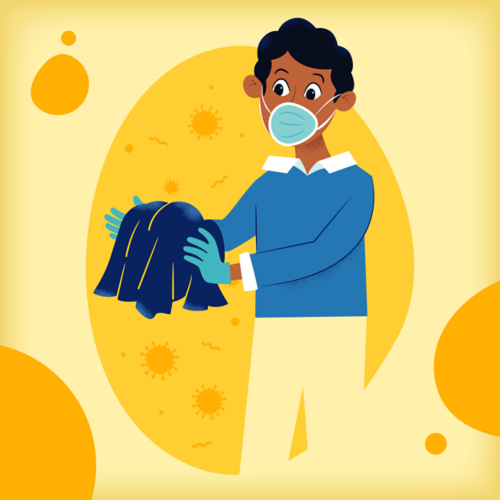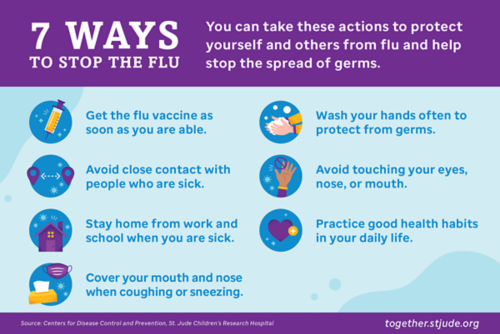Menu
Close
Back
Welcome to
Together is a new resource for anyone affected by pediatric cancer - patients and their parents, family members, and friends.
Learn MoreRespiratory illnesses such as flu and COVID-19 are often caused by a virus. These infections can spread from person to person. Symptoms can range from mild to severe. In most cases, you can care for someone with a viral respiratory infection at home.
It’s important to:
Talk to your health care provider about symptoms that worry you. The list above includes some of the more common warning signs. There may be others. In a medical emergency, call 911.
Keep the patient away from other people to reduce the risk of spreading the virus to others.
Clean household items and surfaces, especially those used by the patient.

Take care handling patient items, especially if they may have body fluids on them.
Supply Checklist for Home Care

Take these actions to protect yourself and others from the flu and help stop the spread of germs.
Make sure that all family members take steps to prevent infection inside and outside the home.
If your child has a weak immune system or other medical condition, close monitoring is especially important. Contact your health care provider to let them know your child may have been exposed to a sick person, especially if your child shows symptoms.
—
Reviewed: January 2024